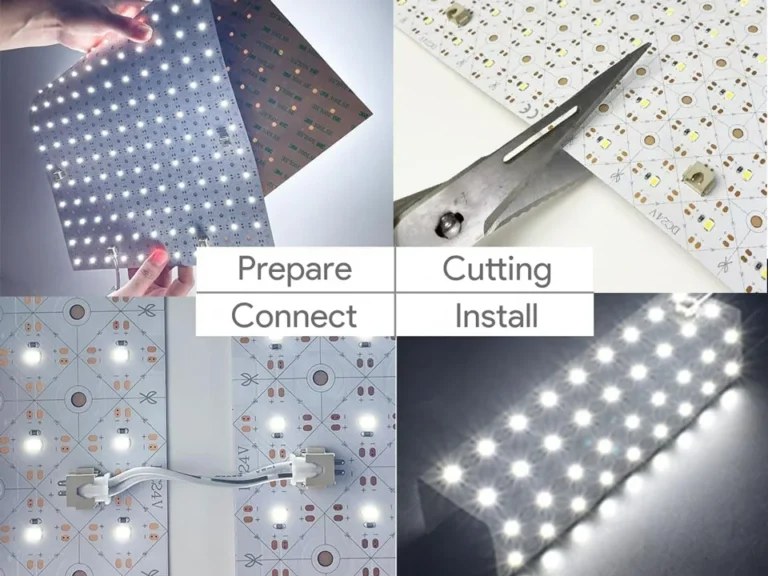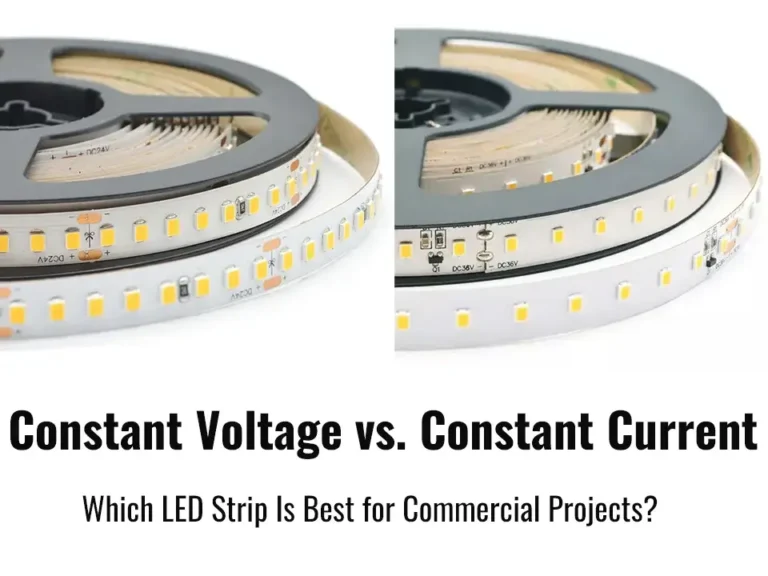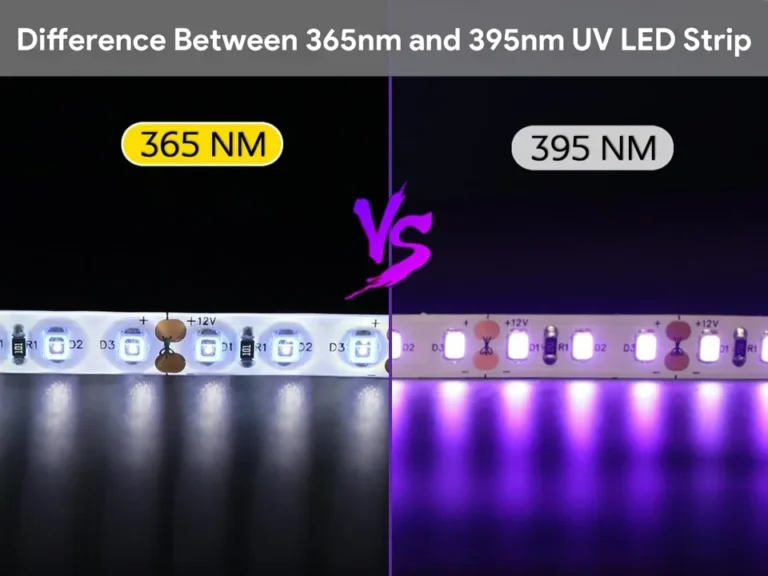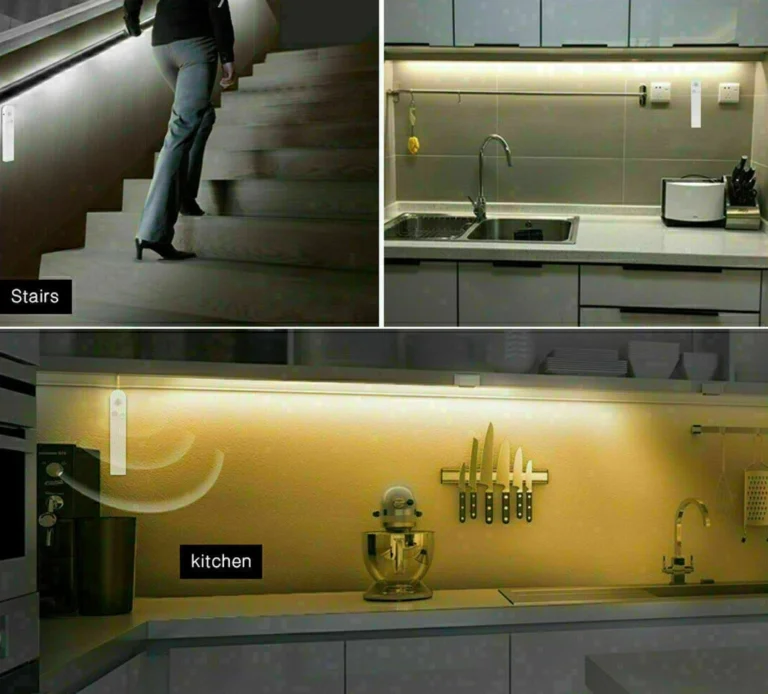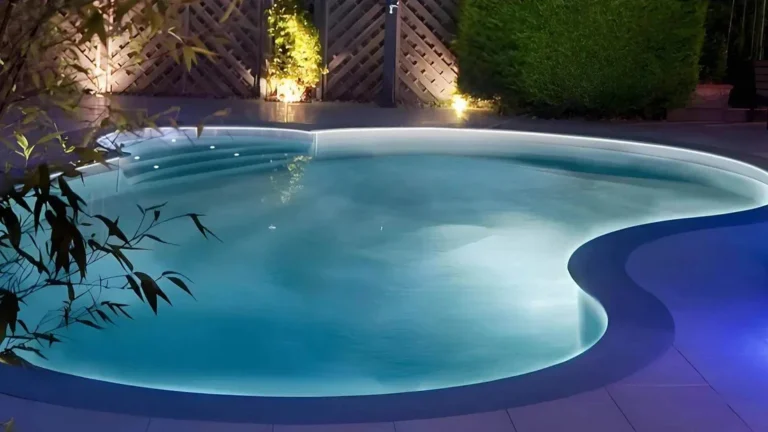Trong những năm gần đây, đèn tuyến tính uốn cong đã trở thành một lựa chọn phổ biến trong thiết kế kiến trúc và ánh sáng nội thất hiện đại. Với đường cong bóng bẩy và hình dạng linh hoạt, những thiết bị sáng tạo này thoát khỏi những hạn chế truyền thống của đường thẳng, mang lại tính thẩm mỹ táo bạo và tương lai cho không gian. Cho dù đó là mẫu ngoằn ngoèo, đèn trần hình tròn hay tính năng tường cong mượt mà, đèn tuyến tính có thể uốn cong mang đến cho các nhà thiết kế khả năng sáng tạo vô tận. Trong bài viết này, chúng ta sẽ khám phá các loại cấu hình ánh sáng tuyến tính có thể uốn chính và các ứng dụng thực tế của chúng trên các dự án thương mại và dân cư khác nhau. Nếu bạn đang tìm kiếm các giải pháp chiếu sáng kết hợp giữa phong cách, hiệu suất và tính linh hoạt, thì ánh sáng tuyến tính có thể uốn cong là lựa chọn hoàn hảo.
Ánh sáng tuyến tính có thể uốn là gì?
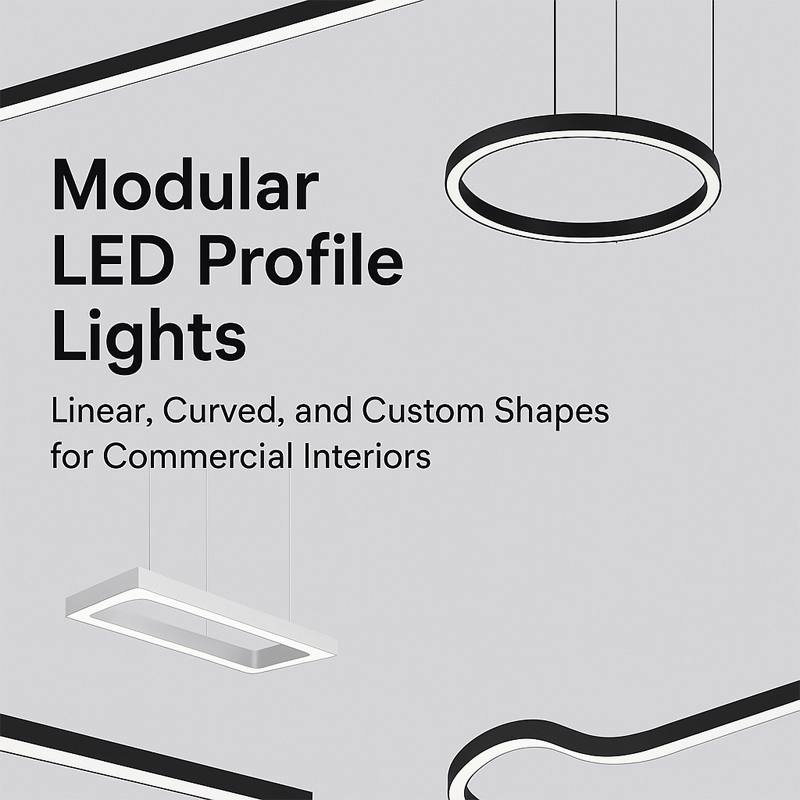
Đèn tuyến tính có thể uốn cong — còn được gọi là ánh sáng tuyến tính linh hoạt, ánh sáng hồ sơ LED cong, hoặc đèn chiếu sáng hình tùy chỉnh — là một loại ánh sáng LED được thiết kế để uốn cong hoặc uốn cong dọc theo các hình dạng hoặc bề mặt cụ thể. Không giống như đèn tuyến tính thẳng tiêu chuẩn, các phiên bản có thể uốn cong được xây dựng bằng cách sử dụng các cấu hình nhôm đặc biệt và dải PCB linh hoạt, cho phép chúng đi theo trần cong, các góc tròn hoặc đường nét hình học sáng tạo.
Những chiếc đèn này rất lý tưởng cho các dự án nội thất và kiến trúc hiện đại, nơi các đường thẳng có thể không phù hợp với thiết kế. Với các tùy chọn như uốn cong bên (đường cong ngang) hoặc uốn trên (đường cong dọc), chúng cung cấp tính linh hoạt tối ưu trong bố cục. Cho dù được sử dụng trong các mẫu zigzag, thiết kế ánh sáng tròn, hay đường cong nghệ thuật, đèn tuyến tính có thể uốn cong mang lại vẻ ngoài bóng bẩy và liền mạch giúp nâng tầm toàn bộ không gian.
Ưu điểm chính bao gồm:
Tự do sáng tạo trong thiết kế chiếu sáng
Đầu ra ánh sáng mượt mà và liên tục
Khả năng tương thích với các bề mặt cong hoặc không đều
Hiện đại, hấp dẫn thẩm mỹ cao cấp
Hỗ trợ cho độ dài tùy chỉnh, nhiệt độ màu và làm mờ
Nếu bạn đang xử lý một không gian phức tạp, nơi các thiết bị tiêu chuẩn sẽ không hoạt động, thì chiếu sáng tuyến tính có thể uốn cong là giải pháp thông minh. Để tìm hiểu thêm về cách chúng tôi hỗ trợ nhu cầu chiếu sáng tùy chỉnh với thiết kế uốn và nhôm trong nhà, hãy xem bài viết của chúng tôi:

Các loại cấu hình ánh sáng tuyến tính có thể uốn cong
Đèn tuyến tính có thể uốn cong có sẵn trong một loạt các hình dạng và cấu hình để đáp ứng nhu cầu của các dự án kiến trúc khác nhau. Dựa trên hình học, hướng uốn và cấu trúc uốn, chúng có thể được phân loại thành các loại sau:
1. Dựa trên hình dạng: hình thức thông thường so với hình thức không đều
Hình dạng thông thường
Chúng bao gồm các dạng hình học như hình tam giác, hình vuông, hình bầu dục, đa giác và đèn tuyến tính có thể uốn cong tròn. Những cấu hình này thường được sử dụng trong trần văn phòng hiện đại, không gian công cộng và các khu trang trí nơi thẩm mỹ đối xứng được ưu tiên. Ví dụ, cấu hình tuyến tính LED tròn là lý tưởng cho trần nhà mái vòm hoặc ánh sáng có tính năng, trong khi các cấu hình có thể uốn cong hình vuông là phổ biến trong bố cục chiếu sáng lưới.
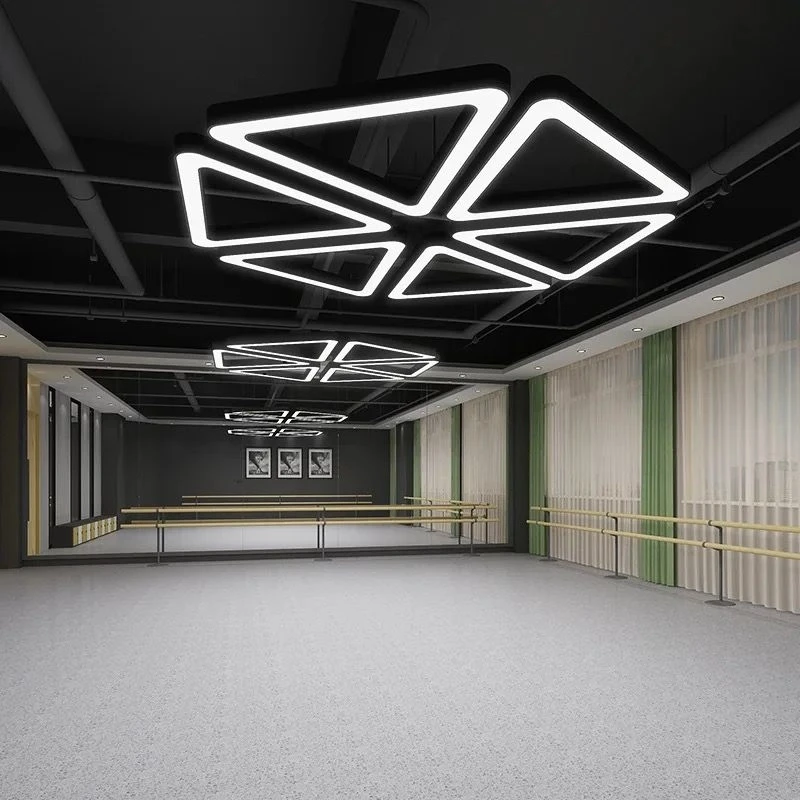
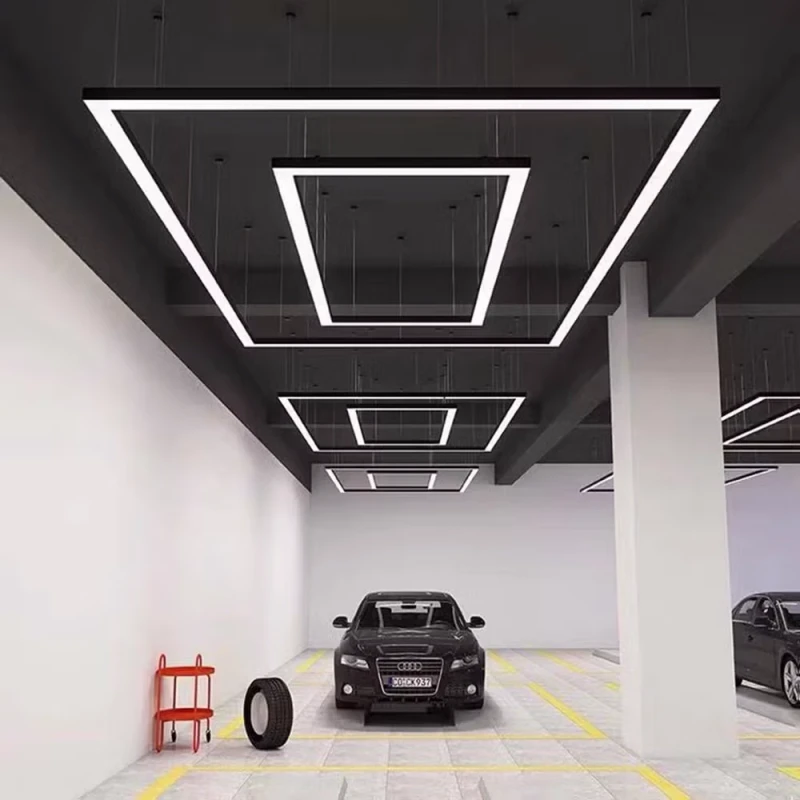
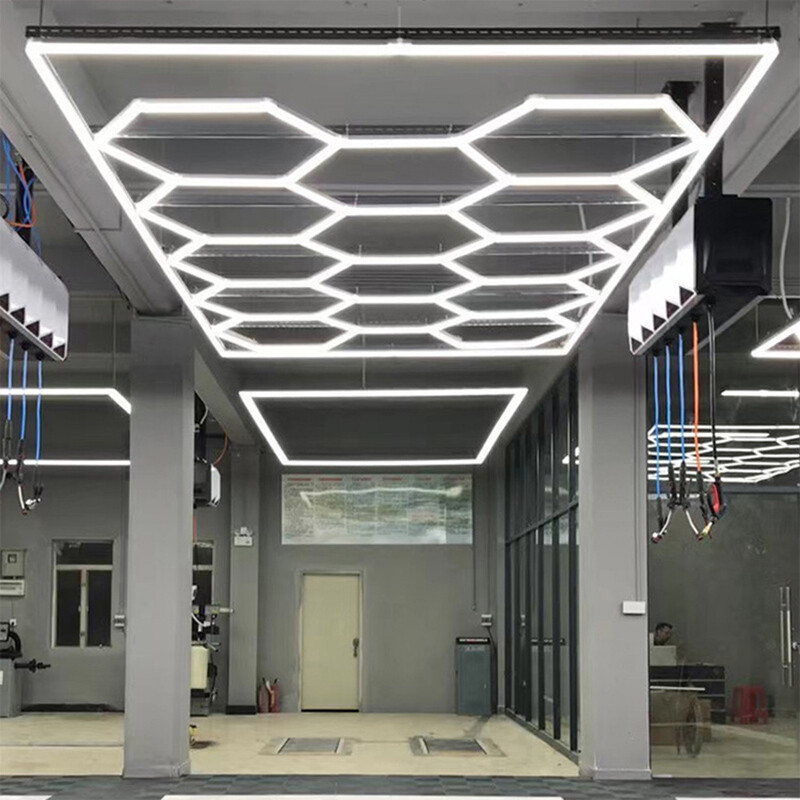
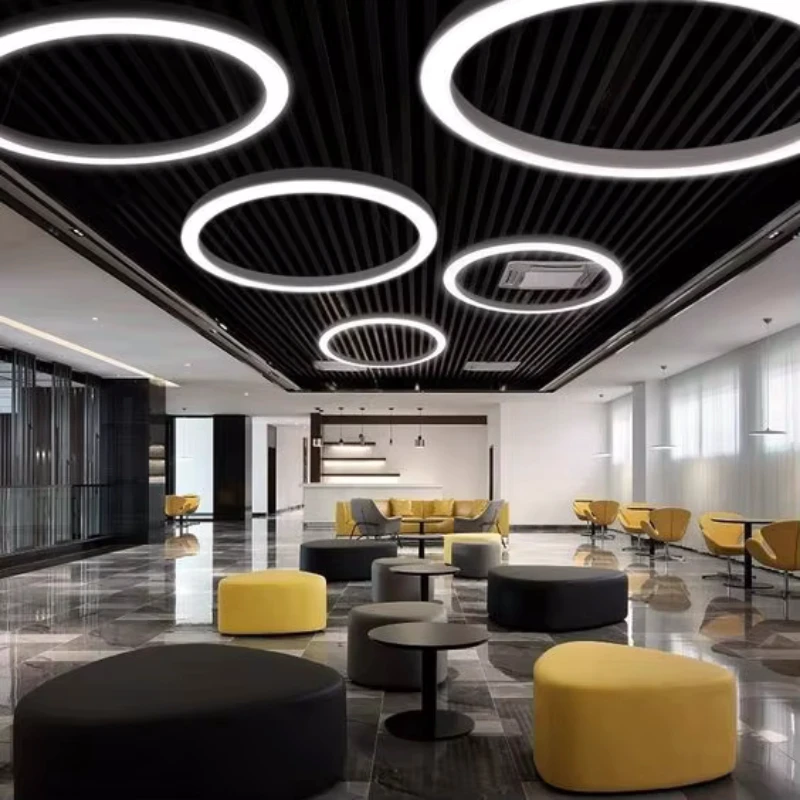
hình dạng bất thường
Những thiết kế này mang lại sự tự do sáng tạo hơn và bao gồm các hình thức như ziczag, hình chữ S, hình mặt trăng và cấu hình kết hợp tế bào. Đặc biệt, đèn LED tuyến tính ziczag thường được sử dụng trong các hành lang, góc và các màn hình bán lẻ sắc sảo. Các cấu hình hình chữ S hoặc hình sóng là lý tưởng cho các đặc điểm trần động, trong khi các đường cong hình mặt trăng và tùy chỉnh có thể phù hợp với các yếu tố kiến trúc có đường viền độc đáo.
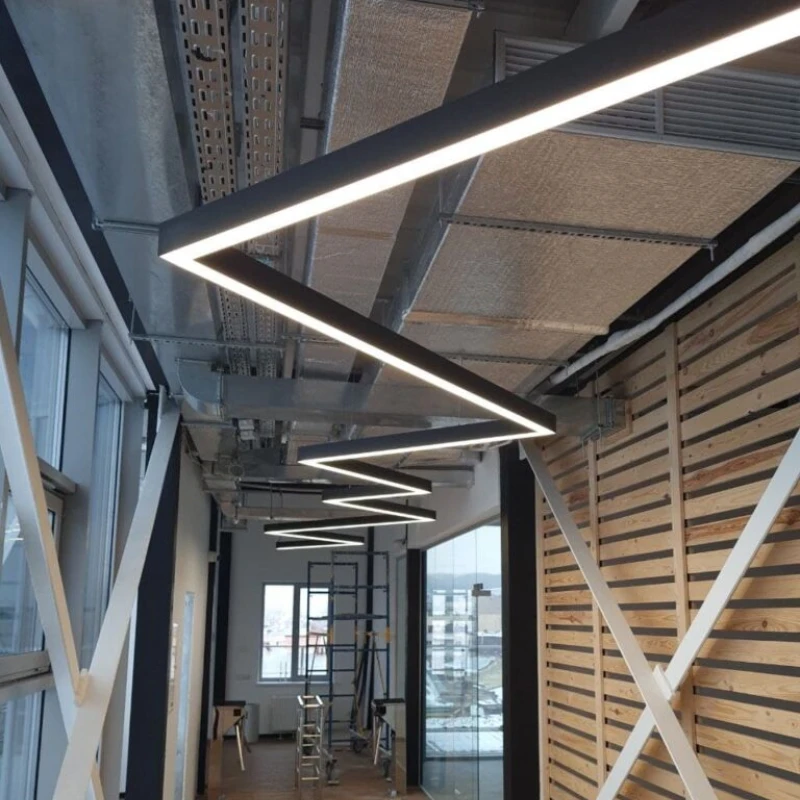
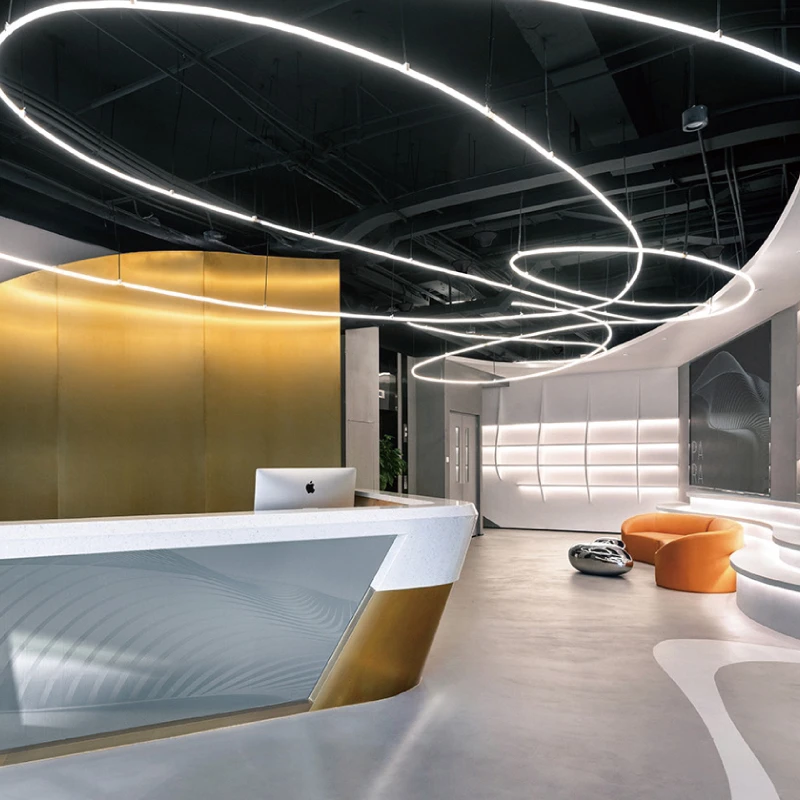
2 . Dựa vào hướng uốn: uốn cong bên cạnh so với uốn trên
Đèn tuyến tính uốn cong theo chiều ngang dọc theo chiều dài của vật cố định, thích hợp để tạo thành các cung nằm ngang và các đường cong tường.
Đèn tuyến tính uốn cong trên cùng theo chiều dọc, hoàn hảo cho trần nhà hình sóng hoặc lắp đặt yêu cầu thay đổi độ cao.
Việc chọn hướng uốn phù hợp là rất quan trọng để đảm bảo sự phù hợp liền mạch với hình học bề mặt của dự án.
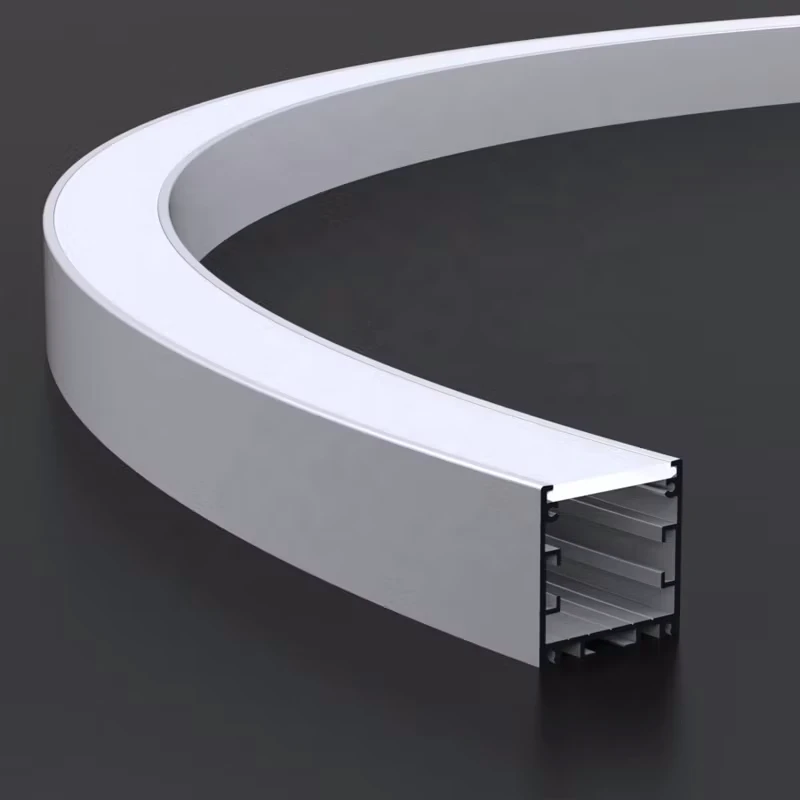
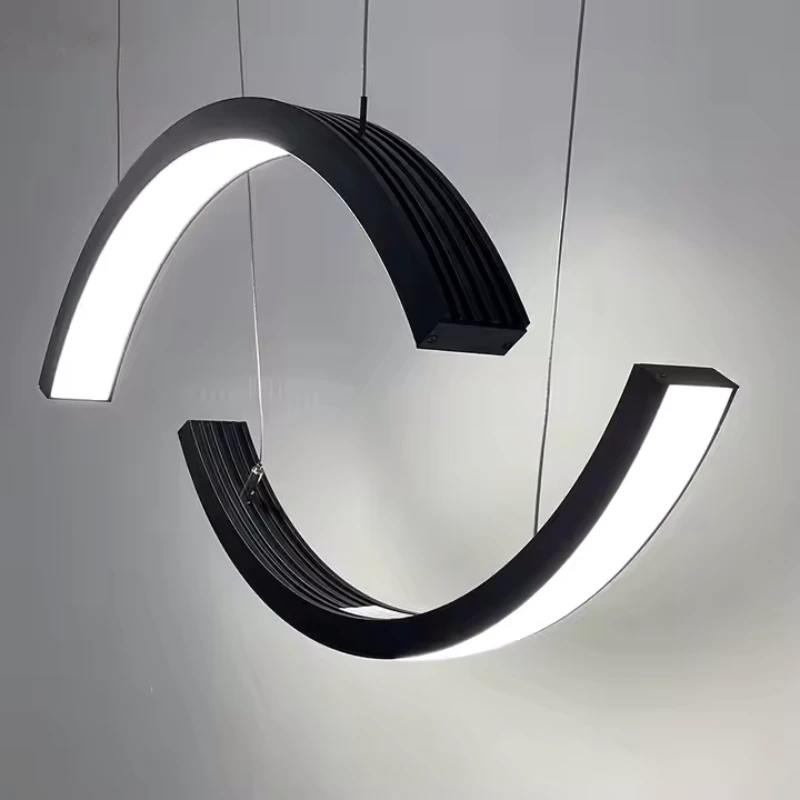
3. Dựa trên phương pháp uốn: uốn kiểu tích hợp so với uốn kiểu
uốn tích hợp (uốn một mảnh) đề cập đến các cấu hình tuyến tính LED được ép đùn và uốn cong như một đơn vị. Đây là kiểu dáng đẹp, chắc chắn và lý tưởng cho những khách hàng cần vẻ ngoài sạch sẽ và lắp đặt nhanh chóng.
uốn kiểu chia (uốn cong lắp ráp) liên quan đến việc uốn cong nhôm và bộ khuếch tán riêng biệt, sau đó lắp ráp chúng lại với nhau. Phương pháp này mang lại sự linh hoạt cao hơn trong các cài đặt quy mô lớn hoặc phức tạp và giúp việc vận chuyển và điều chỉnh tại chỗ dễ dàng hơn.
Mỗi loại ánh sáng tuyến tính có thể uốn phục vụ một mục đích riêng trong ánh sáng kiến trúc và nội thất. Việc lựa chọn hình dạng, hướng và cấu trúc phù hợp sẽ tác động đáng kể đến cả hiệu quả thị giác và hiệu quả lắp đặt.
Ứng dụng của đèn tuyến tính có thể uốn cong
Đèn tuyến tính có thể uốn cong cung cấp khả năng thiết kế vô hạn và được sử dụng rộng rãi trong các môi trường kiến trúc, thương mại, dân cư và sáng tạo. Hình thức linh hoạt của chúng cho phép tích hợp ánh sáng liền mạch khi các thiết bị cố định cứng bị thiếu. Dưới đây là các danh mục ứng dụng chính với các thiết lập ví dụ và giải pháp sản phẩm được đề xuất.
1. Chiếu sáng kiến trúc - Trần và mặt tiền cong
Trong các hành lang hoặc khu vực lễ tân sang trọng, đèn tuyến tính hình tròn hoặc hình vòng lớn có thể treo trên trần nhà cong để tạo điểm nhấn trung tâm tuyệt đẹp. Những thiết bị này mang lại cả độ chiếu sáng và tác động kiến trúc.
Sản phẩm được đề xuất:
Cấu hình tuyến tính LED uốn tròn trên cùng với bộ khuếch tán opal, 3000K màu trắng ấm, hỗ trợ làm mờ Dali
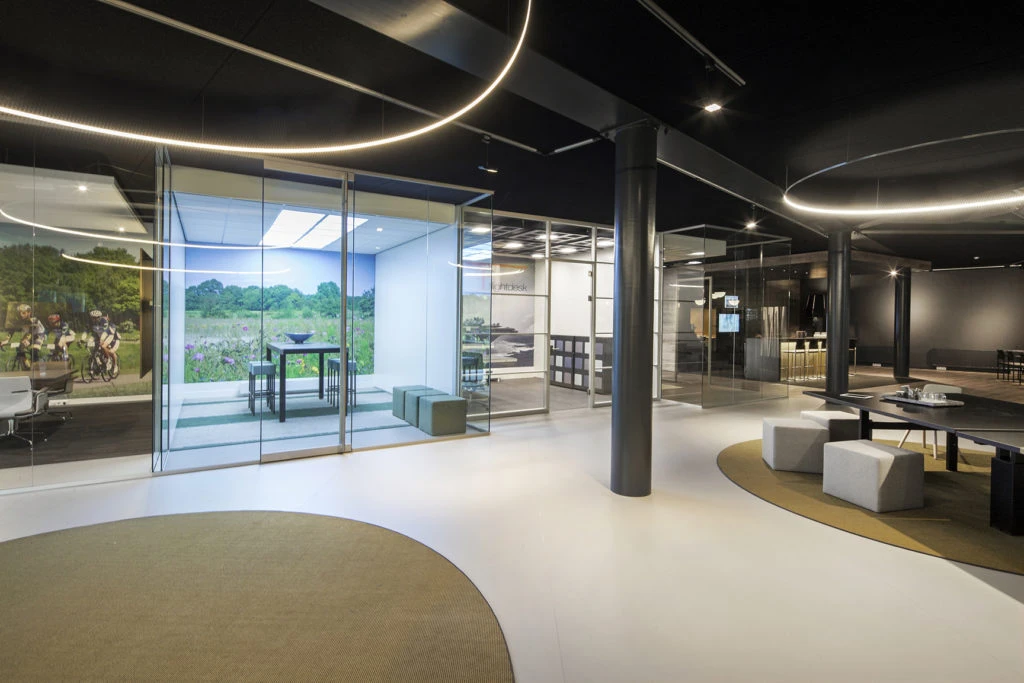
2. Bán lẻ & chiếu sáng trưng bày - Bán hàng trực quan sáng tạo
Các cửa hàng bán lẻ thường lắp đặt đèn ziczac hoặc góc uốn cong góc trên tường sản phẩm hoặc kệ trưng bày để củng cố bầu không khí thời thượng và hiện đại. Các đường nét sắc nét và góc động thu hút sự chú ý trực quan và giúp xác định các vùng sản phẩm.
Sản phẩm được đề xuất:
Cấu hình nhôm uốn cong hình zigzag với dải LED 2835, CRI90 +, 10W / m, đầu vào 24V
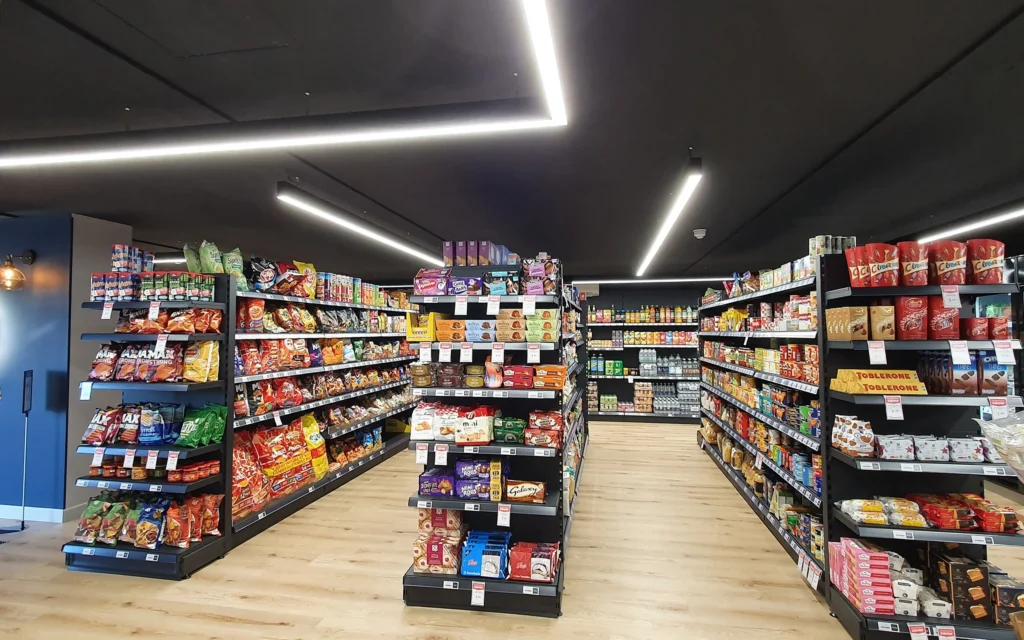
3. Chiếu sáng khu dân cư - Tính năng trần và tường tùy chỉnh
Trong phòng khách cao cấp hoặc rạp hát gia đình, đèn tuyến tính uốn cong có thể được sử dụng để tạo đường viền hình lưỡi liềm hoặc mặt trăng. Những hình dạng này thêm sự mềm mại và chiều sâu trong khi cung cấp ánh sáng xung quanh chức năng.
Sản phẩm được đề xuất:
Cấu hình tuyến tính LED uốn bên với dải COB không có chấm, 4000K màu trắng trung tính, chiều rộng PCB 8mm, sử dụng trong nhà IP44
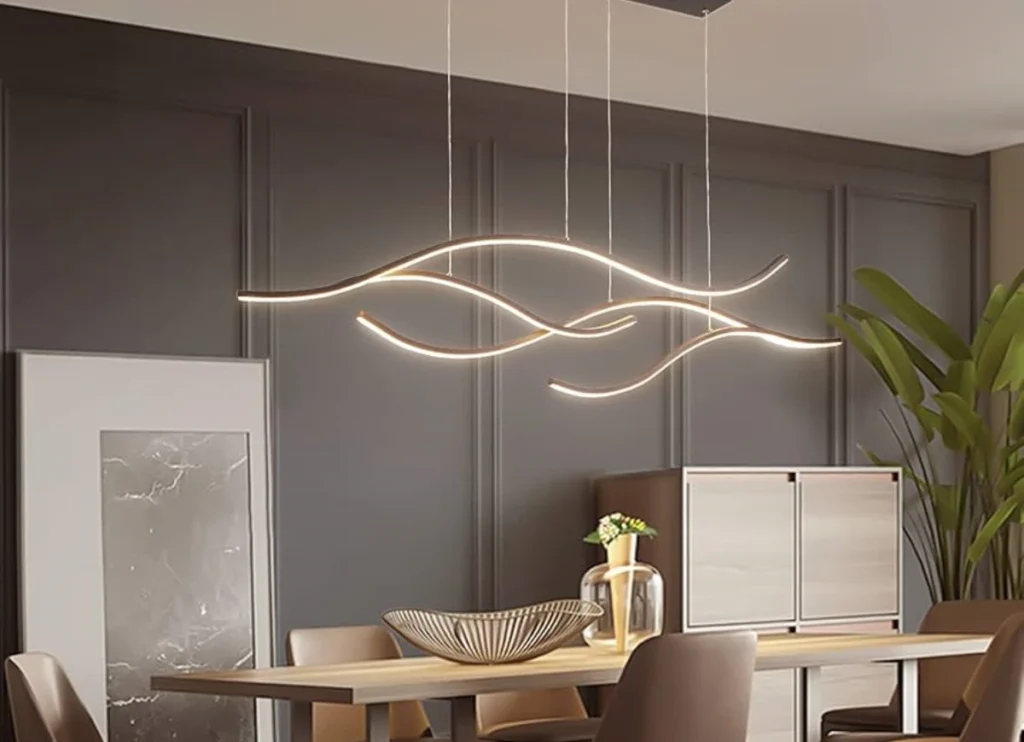
4. Không gian công cộng & thương mại - Hành lang và ánh sáng tìm đường
Các hành lang dài trong sân bay, phòng trưng bày hoặc văn phòng có thể kết hợp ánh sáng đa giác hoặc có thể uốn liên tục dọc theo các đường trần hoặc chuyển tiếp tường. Những thiết kế này tăng cường khả năng hiển thị đồng thời mang đến cho không gian một vẻ ngoài hiện đại, thanh lịch.
Sản phẩm được đề xuất:
Hệ thống ánh sáng tuyến tính đa giác tích hợp, điện áp không đổi 48V, 30W / m, bộ khuếch tán PMMA, sao lưu khẩn cấp tùy chọn
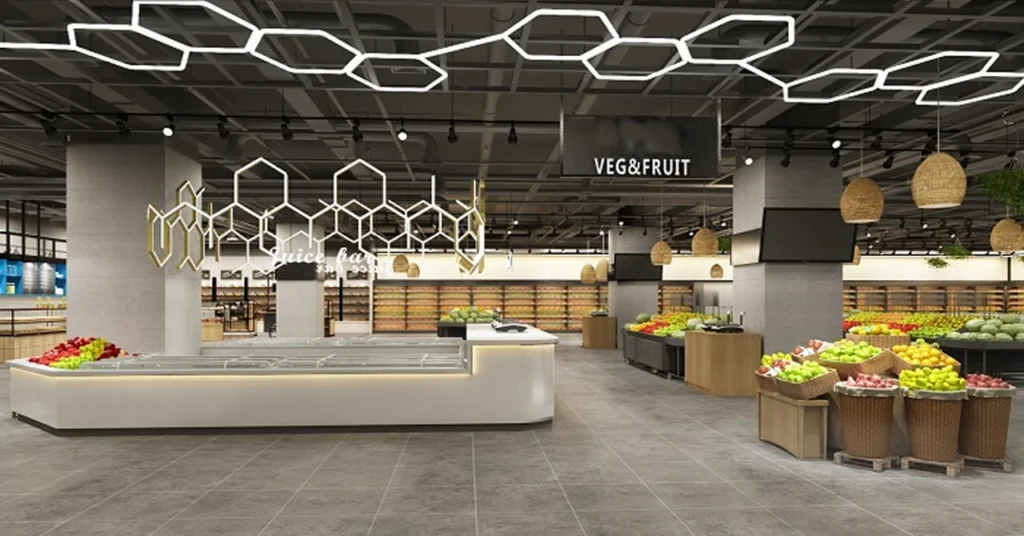
5. Cài đặt sáng tạo & dự án nghệ thuật
Phòng trưng bày nghệ thuật, nhà hàng theo chủ đề hoặc không gian triển lãm thường sử dụng các hình dạng bất thường như cấu hình có thể uốn cong dạng tế bào kết hợp hoặc dạng sóng để tạo ra các tác phẩm sắp đặt trực quan nổi bật kết hợp ánh sáng, hình thức và cách kể chuyện.
Sản phẩm được đề xuất:
Cấu hình ô kết hợp có thể tùy chỉnh với dải LED RGBW, điều khiển DMX512, hệ thống lắp ráp mô-đun
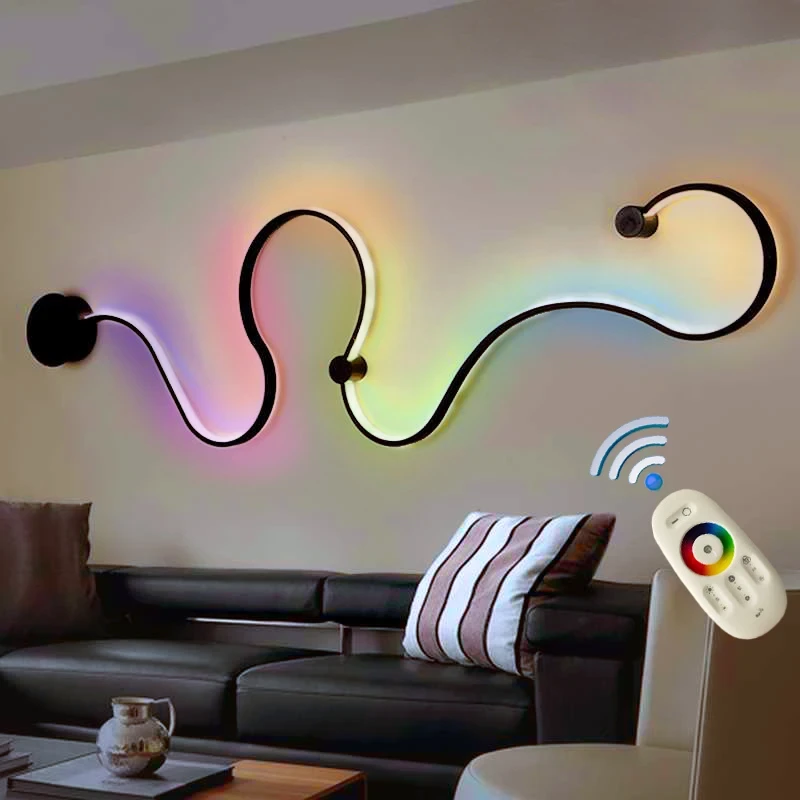
Ứng dụng ánh sáng tuyến tính có thể uốn và khuyến nghị sản phẩm
| khu vực ứng dụng | Đặc điểm thiết kế điển hình | Đặc điểm kỹ thuật sản phẩm được đề xuất |
| Chiếu sáng kiến trúc | Đèn vòng tròn hoặc nhiều lớp trên trần nhà cong | Cấu hình tuyến tính LED uốn tròn hàng đầu, Bộ khuếch tán opal, 3000K màu trắng ấm, Dali mờ |
| Bán lẻ & chiếu sáng trưng bày | Đèn ziczag hoặc đèn treo tường góc cạnh | Cấu hình nhôm có thể uốn cong hình zigzag, dải LED 2835, CRI90 +, 10W / m, đầu vào 24V |
| Chiếu sáng khu dân cư | Đặc điểm trần xung quanh hình mặt trăng hoặc hình lưỡi liềm | Cấu hình uốn cong bên với dải COB không có chấm, 4000K màu trắng trung tính, PCB 8mm, cấp trong nhà IP44 |
| Không gian công cộng & thương mại | Ánh sáng đường dẫn đa giác hoặc liên tục trong hành lang | Hệ thống LED đa giác tích hợp, đầu vào DC 48V, 30W / m, bộ khuếch tán PMMA, sao lưu khẩn cấp tùy chọn |
| Cài đặt sáng tạo | Chiếu sáng nghệ thuật kết hợp hoặc không thường xuyên | Cấu hình nhôm kết hợp tùy chỉnh, dải LED RGBW, điều khiển DMX512, hệ thống kết nối mô-đun |
Cách chọn ánh sáng tuyến tính có thể uốn cong phù hợp
Lựa chọn ánh sáng tuyến tính có thể uốn phù hợp là điều quan trọng để đạt được hiệu quả ánh sáng mong muốn trong khi vẫn đảm bảo lắp đặt trơn tru và độ tin cậy lâu dài. Dưới đây là những yếu tố chính cần xem xét khi chọn hồ sơ phù hợp nhất cho dự án của bạn:
1. Xác định hình dạng và hướng uốn
Các cấu hình uốn cong bên hông và phù hợp cho các bức tường tròn, mặt tiền lượn sóng hoặc trang trí bề mặt phẳng.
Các cấu hình uốn trên cùng uốn cong theo chiều dọc, hoàn hảo cho trần nhấp nhô, đường cong treo hoặc các tính năng treo nhiều lớp.
Mẹo: Xem xét hình học bề mặt và góc lắp đặt để quyết định hướng uốn phù hợp với thiết kế của bạn.
2. Chọn hình dạng hồ sơ phù hợp
Phù hợp với cấu hình ánh sáng với phong cách thiết kế của bạn:
Hình dạng thông thường (hình tròn, hình vuông, hình tam giác) cung cấp tính đối xứng hình học, sạch sẽ.
Hình dạng không đều (zig zag, wave, s-shape) mang đến cái nhìn năng động và hiện đại hơn.
Các hình dạng tùy chỉnh như hình tổ ong hoặc hồ sơ mặt trăng có thể mang lại sự độc đáo và nhận diện thương hiệu cho một không gian.
3. Chọn giữa uốn cong tích hợp hoặc chia tách
Uốn tích hợp (hồ sơ một mảnh) là lý tưởng để làm sạch thẩm mỹ và lắp đặt nhanh chóng.
Uốn kiểu phân chia mang lại sự linh hoạt cao hơn cho vận chuyển và thiết kế khổ lớn.
Chọn dựa trên môi trường cài đặt, nhu cầu vận chuyển và kích thước hồ sơ của bạn.
4. Chỉ định các thông số ánh sáng
Điều chỉnh cấu hình LED bên trong cho dự án của bạn:
Loại LED: COB cho ánh sáng mềm không chấm, SMD cho độ sáng cao hơn
CCT (nhiệt độ màu): Trắng ấm cho lòng hiếu khách, trung tính cho văn phòng, trắng mát cho bán lẻ
CRI: Tối thiểu 90+ cho màu sắc thương mại
Làm mờ: DALI, 0-10V, TRAC hoặc DMX tùy thuộc vào nhu cầu điều khiển
IP 20 cho không gian khô trong nhà, IP65 hoặc IP67 để sử dụng ẩm hoặc ngoài trời
5. Cân nhắc lắp và phụ kiện
Quyết định giữa việc lắp đặt bề mặt, hệ thống treo hoặc lắp đặt âm tường.
Kiểm tra các bộ khuếch tán tương thích, nắp đầu và đầu nối để có một kết thúc sạch sẽ.
Bằng cách hiểu các tùy chọn kỹ thuật và yêu cầu thiết kế, bạn có thể tự tin chọn giải pháp ánh sáng tuyến tính có thể uốn cong lý tưởng cho dự án chiếu sáng kiến trúc hoặc thương mại của mình.
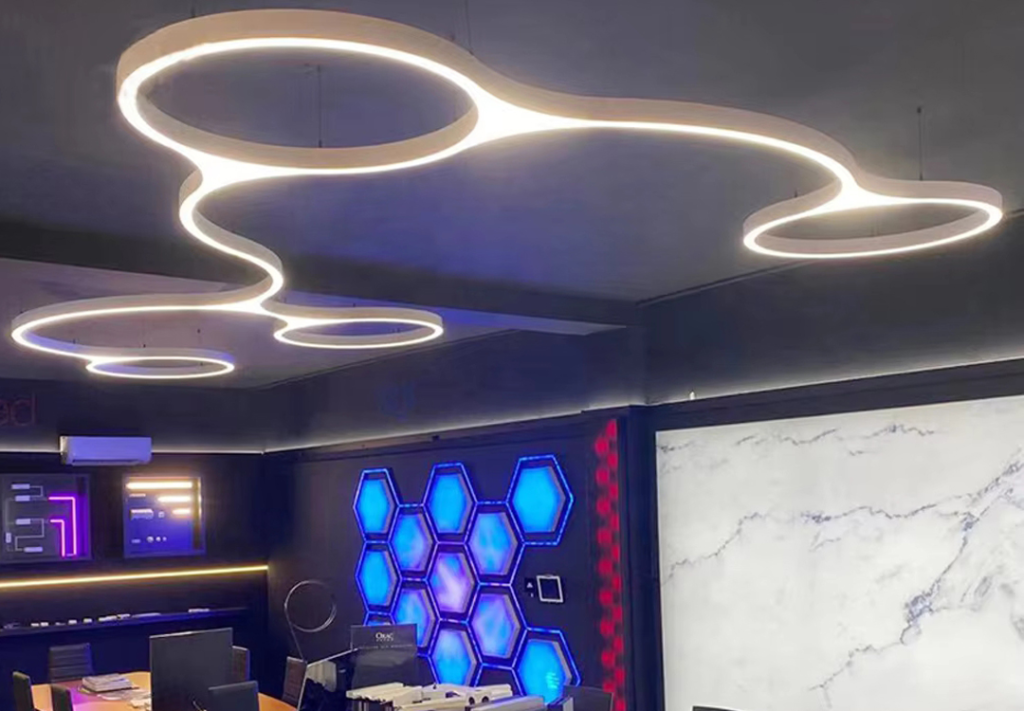
mua đèn tuyến tính có thể uốn ở đâu với số lượng lớn
Nếu bạn đang tìm mua đèn tuyến tính có thể uốn với số lượng lớn cho các dự án chiếu sáng kiến trúc, thương mại hoặc tùy chỉnh, điều quan trọng là phải làm việc với một nhà sản xuất chuyên nghiệp cung cấp nhiều tùy chọn hồ sơ, khả năng uốn chính xác và dịch vụ tùy chỉnh đầy đủ. Đèn tuyến tính có thể uốn chất lượng cao nên cung cấp hiệu suất chiếu sáng nhất quán, tích hợp liền mạch với thiết kế của bạn và độ bền lâu dài.
Khi tìm nguồn cung ứng với số lượng lớn, hãy xem xét các nhà cung cấp:
Có khả năng ép đùn và uốn nhôm trong nhà
Cung cấp một loạt các hình dạng bao gồm zigzag, hình tròn, sóng và thiết kế tùy chỉnh
Hỗ trợ tùy biến OEM/ODM cho kích thước hồ sơ, nhiệt độ màu và hệ thống điều khiển
Cung cấp hỗ trợ kỹ thuật và quay vòng sản xuất nhanh cho thời hạn dự án
Đảm bảo các chứng chỉ quốc tế như CE, ROHS, UL hoặc ETL để tuân thủ
Cho dù bạn là nhà phân phối, nhà thầu chiếu sáng hay studio thiết kế, việc chọn đúng nhà cung cấp đảm bảo dự án của bạn nổi bật — cả về mặt trực quan và kỹ thuật.
Tìm kiếm ánh sáng tuyến tính uốn trực tiếp đáng tin cậy, nhà máy? tiếp xúc dấu tượng nhỏ Hôm nay để khám phá các mẫu, nhận báo giá hoặc thảo luận về các giải pháp tùy chỉnh phù hợp với nhu cầu dự án của bạn.
